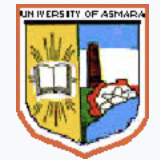Introduction to the University of Asmara:
Basic information
Established in 1958.
Nature of the institution: It was once a public university in Eritrea.
Geographical location: Located in Asmara, the capital of Eritrea.
Current status of the school: In 2006, the Eritrean government carried out higher education reforms and split the University of Asmara into 7 colleges, with only the Graduate School remaining at the University of Asmara.
Historical evolution
Early establishment: Founded in 1958 by the "Pie Madres Nigritia" (Comboni Sisters), it was originally named the Catholic Holy Family College. At that time, it mainly provided education for local residents, but in the early 1950s, all students were Italians.
Development and change: In 1964, the school was renamed the University of Asmara and began to offer associate degree courses in liberal arts, business and science. In 1979, the new president promoted a major reorganization of the curriculum and structure, increasing the number of students from 300 to 2,700, adding new courses, faculty, daytime and evening extension courses, and campus buildings, and also reached a bilateral agreement with Addis Ababa University to exchange students and teachers.
Subsequent adjustments: In 2003, the school stopped recruiting new students, and the government reallocated students to five other higher education institutions. In 2006, the University of Asmara was closed and reorganized into other institutions, such as the Eritrean Institute of Technology.
School Strength
Faculty: Before the reorganization, the school had a diverse faculty, including teachers from Eritrea and other countries, who had rich teaching and research experience in their respective fields.
Teaching Resources: It has multiple libraries with a large collection of books, journals and academic literature, providing students and teachers with rich learning and research resources. In addition, the school also has teaching facilities such as computer centers and laboratories to support teaching and scientific research activities.
Educational philosophy: It aims to cultivate all-round professional talents for Eritrea, focusing on the combination of theory and practice, cultivating students' innovation ability and ability to solve practical problems, and also focusing on cultivating students' social responsibility and teamwork spirit, so that they can contribute to the development of the country and the progress of society.
Key laboratories and disciplines
Medical field: It has certain strengths in medical education and research. Its affiliated hospitals provide students with practical opportunities and have certain research results in tropical disease research and public health.
Engineering and technology field: After the Eritrea Institute of Technology was separated from the University of Asmara, it continued to develop in engineering and technology disciplines, such as mechanical engineering, electrical engineering, civil engineering and other majors, and cultivated a large number of talents for the country's infrastructure construction and industrial development.
Faculty: Before the separation, the University of Asmara had several faculties, such as the School of Medicine, the School of Engineering, the School of Business, the School of Humanities, the School of Agriculture, etc., covering multiple disciplines.
Ranking: Since the school underwent major adjustments in 2006, it has not participated in international university rankings since then. Before the adjustment, the University of Asmara had a certain influence among universities in Africa.
Fees: In the original undergraduate education stage of the University of Asmara, tuition fees are relatively low, and there are certain preferential policies for domestic students to ensure that more students can receive higher education. For international students, tuition fees may vary, but they are also within an affordable range. In addition, the school also provides some scholarships and grants to help students in need.
Campus environment
Architectural style: The campus architectural style is unique, integrating the architectural features of the Italian colonial period and local cultural elements. The building has an elegant appearance and complete internal facilities.
Campus facilities: It has modern teaching buildings, laboratories, libraries, gymnasiums, student dormitories and other facilities, providing students with a good learning and living environment. There are also many gardens and green spaces on campus, with beautiful environment and pleasant scenery.
-

University of Asmara
-

Mesoamerican University
-

Istmo University
-

Mariano Galvez University of Guatemala
-

Regional University of Guatemala
-

Galileo University
-

Francisco Marroquín University
-

Rafael Landívar University
-

University of the Valley of Guatemala
-

University of San Carlos of Guatemala
-

Technological Institute of Tlaxcala Plateau
-

Golfo University
-

Technological University of South Sonora
-

Technological University of Huejotzingo
-

Tizimín Institute of Technology
-

Chilpancingo Institute of Technology
